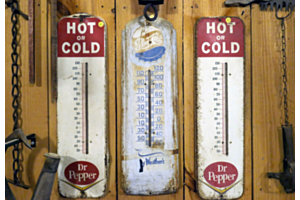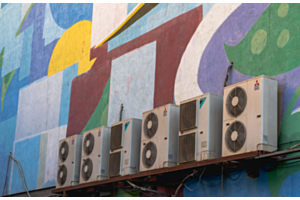Monthly Archives: October 2022
-
October 26, 2022
You think you’ve found mold on your ductless mini split. You can barely believe your eyes though. There’s no way that mold of all things can develop on the components of your mini split…right?
While it would be nice if that was true, it isn’t.
Mold prefers dark, humid, and warm conditions. A ductless mini split system checks off all those boxes, especially when it comes to the internal components like the wires and coils.
Once mold develops, it tends to spread. What could have begun as a small mold issue on the inside of your mini split system will soon spread to the outside.
By then, the sight of mold is a dead giveaway that you have a fungi problem.
Mold can appear in all sorts of colors, including black, green, white, and gray. Depending on the color of your mini split, detecting the mold visually shouldn’t prove too challenging.
There
-
October 19, 2022
When you wake up in the morning, your mini split is on and running. When you come home from work or school later in the day, your mini split is still on and running.
Of course, when you get ready to go to bed as well, your mini split is running.
Now that you’ve noticed your mini split’s operational frequency, you can’t exactly un-notice it. Is it normal for your mini split to run so much or should a mini split ever shut off?
Mini splits run quite frequently and possibly even–as it seems to you–all the time.
This isn’t going to be the nightmare on your energy bill that you think it may be, though.
You have to remember that a ductless mini split system is a lot more energy-efficient than traditional HVAC such as furnaces or central air conditioning.
A mini split will heat or cool according to preselected zones so the house doesn’t needlessly receive hot or cold air when and where it doesn’t need it.
If your mini split is running frequently,
-
October 12, 2022
After your traditional HVAC system had yet another issue that necessitated a pricy repair, you’ve finally gotten fed up and are exploring other options.
You can’t believe that you have never looked into ductless mini split systems before, as they seem to be the solution to all your woes. However, you can’t help but wonder how safe a mini split is.
Ductless mini splits are regarded as quite safe and carry no more risk than your traditional HVAC systems like an air conditioner or furnace.
One risk that you may worry about is the unit overheating and possibly being very hot to the touch, enough to be injurious.
That won’t happen with a mini split system. Ductless mini splits feature two main components: the compressor, which goes outdoors, and the air-handling unit, which goes indoors.
Even if your mini split is blowing out warm air, the air-handling unit never gets so warm that you could get hurt if you happen to touch it.
Another
-
October 05, 2022
You're soon going to get a ductless mini split system installed in your home. You’re very excited, as you’ve heard countless good things about how mini splits can make your home more energy-efficient and save on your energy bills.
However, mini splits are such a big switch from traditional HVAC like furnaces or central air conditioners that you can use a bit of guidance.
Here are some handy rules of thumb for ductless mini splits.
Select a Location for the Compressor Wisely
The condenser or compressor is the outdoor component of your ductless mini split system.
The compressor collects air, cools or warms it, and–through a series of wires–sends it to your indoor air-handling units, where the air comes out into your home comfortable and pleasant..
A compressor can only work as well as where you place it.
You must have a slab of concrete poured for the compressor if your yard is mostly lawn or lawn and deck.






